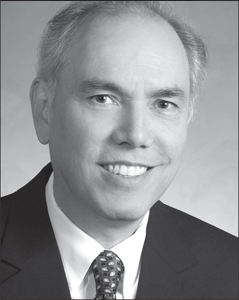As a society, we are devoted to the idea of spreading the costs of catastrophic losses. Continuing this commitment in the face of projected increases due to climate change will require ensuring that such programs also create incentives to engage in hazard mitigation.

 Margaret Peloso is an environmental and natural resources partner in Vinson & Elkins’s Washington, D.C., office. Kristen Miller is an environmental and natural resources associate in the D.C. office.
Margaret Peloso is an environmental and natural resources partner in Vinson & Elkins’s Washington, D.C., office. Kristen Miller is an environmental and natural resources associate in the D.C. office.
Natural disaster response in the United States has long been characterized by the distribution of significant amounts of government funds to aid recovery. These funds are allocated in the form of direct aid in the wake of an event and through subsidized insurance policies before a hurricane, flood, wildfire, or tornado. In fact, our cultural paradigms around sharing the burden of disaster recovery have become so strong that researchers find that individual property owners often choose to live in hazard-prone areas in part because they believe the government will make these areas safe for them or help them rebuild in the wake of an adverse event. This effect is further compounded by the fact that people often misevaluate or even ignore risk, and tend to be under-insured for high-value losses that are rarely experienced.
Against this backdrop, the United States has experienced increasing natural disaster losses from hurricane, flood, and fire events, all of which are attributed at least in part to the impacts of climate change. According to the National Climate Assessment, recent increases in hurricane activity are attributable in part to higher sea surface temperatures. The report notes that floods may intensify in the future as a result of climate change because human-induced warming increases the factors that cause and amplify inundation, such as heavy or prolonged precipitation and storm surges. Wildfires are also impacted, as hotter and drier weather, as well as earlier snow melt, extends the length of the wildfire season and causes fires to burn more acreage. In fact, the impact of extreme weather events can already be seen in the National Flood Insurance Program and the Stafford Disaster relief program administered by the Federal Emergency Management Agency, which collectively required FEMA to borrow approximately $24 billion from the federal treasury to pay out NFIP claims and provide Stafford Disaster relief in the wake of Hurricane Katrina and Superstorm Sandy.
Going forward, climate change will pose two separate but related challenges for the programs that distribute government funds in response to disasters. First, can social insurance be structured such that it remains a financially viable tool to promote resilience and community recovery? Second, how can insurance programs be structured to promote adaptation measures that reduce exposure to extreme events?
An interesting example of the limitations of social insurance arises from the California courts’ attempt to socialize wildfire costs through an expansion of the state’s inverse condemnation law. As this example and others show, the viability of social insurance will be dependent upon the ability of policymakers to proactively structure programs that both engage in risk spreading and promote risk-reduction behaviors.
The role of any insurance product is to spread risk. Insurers remain solvent by collecting more premiums than the losses they have to pay out. They accomplish this in two ways: setting premiums that correlate to the risk of loss, and ensuring risks that are sufficiently diversified that the likelihood of too many claims being made at the same time is reduced. This is particularly challenging when insuring natural disaster events, which often cause losses that are both near total and occur at the same time. When a hurricane storm surge causes flooding, for example, it does not just inundate one house. If an insurer has too much exposure to flood risk, it will not be able to maintain solvency. While insurers can reduce their exposure by purchasing reinsurance and transferring some of the risk to a third party, the ability of insurers to purchase reinsurance will be limited by whether they can increase premiums to cover the costs of such reinsurance programs.
T he problem of limited market capacity to address correlated disaster losses led to the creation of the National Flood Insurance Program in the United States. Prior to the 1950s, commercial flood insurance was available. However, a series of catastrophic floods along the Mississippi River caused many insurers to face significant losses — leading them to either go out of business or exit the flood insurance market. The federal government therefore stepped in to become an insurer of last resort, creating NFIP by statute in 1968.
The program acts as primary insurance for property owners that is underwritten by the federal government. The purchase of insurance under NFIP is required for all property owners who hold a federally backed mortgage in the 100-year floodplain. In theory, NFIP premiums should be set at levels that reflect the risk of flooding at any given property, but there are several factors that result in premiums being heavily subsidized, including the setting of rates based on outdated maps that do not reflect current flood risks.
The structural issues in NFIP were particularly exposed after Katrina and Sandy, when claims on policies vastly exceeded the amount the program collected in premiums. While FEMA is required by statute to repay resultant borrowing, a 2017 GAO report concluded that NFIP is unlikely to generate sufficient revenues to repay these debts. Last year FEMA used new statutory authority to place reinsurance for NFIP, transferring $1.042 billion of risk to the private market to cover payouts exceeding $4 billion. This policy was triggered after Hurricane Harvey, which caused estimated losses to NFIP between $8.5 and $9.5 billion.
The other form of disaster relief at the federal level is the Stafford Disaster Relief Act, which provides aid for the immediate aftermath of presidentially declared disasters as well as for rebuilding. In the case of flood or hurricane events, Stafford works in concert with NFIP to provide funds for rebuilding, but there are limitations on Stafford Relief provided in response to floods. Specifically, the Stafford Act prohibits the use of funds to provide assistance to property owners who were legally required to obtain flood insurance and did not have coverage. There is not a similar statutory provision requiring insurance coverage for recipients of aid after other disaster events, including wildfires.
Prudently, the Stafford Act also has programs to funds to reduce risk, including the Hazard Mitigation Grant Program and the Pre-Disaster Mitigation Program. The first provides post-disaster funds for the deployment of hazard-mitigation measures during rebuilding, although implementation of the program has been uneven. The latter provides grant funding to state, local, and tribal governments for mitigation measures.
The upshot from the combination of the NFIP and Stafford programs is that federal taxpayers will bear most of the costs of disaster recovery (and perhaps an even greater share for non-flood disasters such as fires). In this context, there is an argument that the NFIP program, while flawed, is better than nothing; if taxpayers inevitably foot the bill, it is better for all property owners to pay something in insurance premiums, even if the premiums do not fully reflect risks. In addition, once property owners purchase insurance, the pricing of insurance can be used to create incentives for risk mitigation. NFIP, for example, offers to reduce premiums based upon risk-reduction measures taken at the community level, such as restoring natural functions of floodplains. Because Stafford Relief for other disasters is not tied to similar insurance requirements, the ability of federal policymakers to encourage hazard mitigation for natural disaster risks such as fires is limited to attempting to incentivize action through federal grant programs for hazard-risk reduction.
Several states have also intervened to provide social insurance programs for natural disasters. The most notable of these is in Florida, where the state both participates in the primary insurance market and acts as a reinsurer to provide coverage for hurricane damage. Florida participates in the primary insurance market through a company called Citizens Property Insurance Corporation, created by the legislature in 2002 to provide property insurance to Floridians who are unable to find coverage on the private market. While Citizens is financed by policyholder premiums, catastrophic losses that exceed premiums are financed by assessments that Citizens is statutorily required to levy on all holders of insurance policies in the state — including those who do not purchase their insurance from Citizens — until the debt is eliminated.
Florida is also involved in the reinsurance market through the Florida Hurricane Catastrophe Fund, which provides a way for insurers to increase their capacity by transferring some of their assumed risk to a third party. Florida’s reinsurance intervention occurred in the wake of Hurricane Andrew in 1992, when many private insurers informed the state of their intent to exit the market. Because it wanted to ensure the continued availability of reasonably priced coverage, the legislature authorized the state to create its own reinsurance program, the Florida Hurricane Catastrophe Fund. Relying on its authority to raise funds through the issuance of pre- and post-event bonds, the fund accumulated a balance of $14.9 billion between the years 2006 and 2016, when the state experienced minimal storm activity. This changed in 2017, when the fund reported estimated losses of $2.04 billion from Hurricane Irma. While a significant balance remains even after this loss, the fund warns that it might need to resort to emergency assessments or post-event bonding if a storm of sufficient size were to hit.
The examples outlined above highlight not only the precarious financial state of social insurance programs, a condition that will only worsen if climate change increases the frequency or severity of extreme weather events, but also the failure of these programs to incentivize risk-mitigation behavior. If insured losses increase in the future, the ability of heavily subsidized social insurance programs to maintain solvency will be in question. In addition, policymakers’ decision to provide heavily discounted insurance rates — which would not be available in a competitively priced market — has undermined the function that insurance rates play in signaling the extent of hazard exposure to property owners. These social insurance programs thus create the risk of increasing societal exposure to natural hazards. Therefore, to the extent that social insurance programs are to be maintained, they must be reexamined and modified to meet the twin goals of risk spreading and promoting hazard mitigation.
The need to revisit our social insurance mechanisms is well illustrated by the unsustainable approach that some California courts have taken to wildfire risk. Damage from wildfires in the state has increased over recent decades, especially those occurring during the Santa Ana season, which is characterized by strong, dry winds that cause fires to spread more quickly. The wildfires in Northern California last October were some of the most destructive in state history, killing 44 people and destroying an estimated 8,900 structures.
In response to fires in years past, California property owners have sought to recoup some of their damages by bringing lawsuits against power companies on the grounds that electric transmission and distribution lines and other equipment owned by the utilities played a role in starting the fires at issue. For example, in Barham v. Southern California Edison Company, homeowners argued that power lines ignited the wildfire that destroyed their homes. Finding in favor of such plaintiffs, California courts have held power companies liable for wildfire damages, effectively creating a social insurance regime in which power companies provide additional insurance to homeowners who face losses.
California is unique in this approach. The state constitution requires that the government must pay an owner fair compensation whenever property is taken or damaged for public use under the state’s eminent domain power. Normally, this process occurs when a public entity initiates an eminent domain proceeding. But when the public entity fails to do so, property owners may seek compensation by bringing an inverse condemnation action. As the California Supreme Court has explained, “The underlying purpose of . . . inverse . . . condemnation is to distribute throughout the community the loss inflicted upon the individual by . . . public improvements: to socialize the burden . . . that should be assumed by society.”
The application of this doctrine has been expanded to hold privately owned utilities liable when they damage private property while providing a public service. Courts have explained that while inverse condemnation liability applies only to public entities, privately owned utilities may be held liable as public entities because such utilities enjoy a state-protected monopoly to provide a public service and are afforded some eminent domain authority to construct the power lines that serve customers. As the Barham court explained with respect to the wildfire case against SCE, public utilities are therefore “more akin to a governmental entity.” In the court’s view, because utilities provide “services and functions . . . of vital public interest,” the “loss-spreading rationale” that drives inverse condemnation still applies. “The fundamental policy” driving these decisions “is to spread among the benefiting community any burden disproportionately borne by a member of that community.”
In effect, the state courts have grabbed onto the utility model as a way to spread risk, akin to an insurance program for fire damages. Critical to this policy rationale, however, is the assumption by courts that the loss will successfully be redistributed among the public. In inverse condemnation cases against governmental entities, this makes sense because costs incurred by such entities can be socialized through taxes, thereby distributing the costs across the public.
But this assumption breaks down when the entity incurring the costs is a privately owned entity that does not have the ability to tax. While a utility could theoretically spread costs across its customer base by raising charges, those prices are closely regulated by California’s Public Utilities Commission. As noted by a state appellate court in Pacific Bell v. Southern California Edison — another inverse condemnation case involving a privately owned utility — this tight regulatory control is in large part due to the fact that utilities enjoy state-protected monopolies over services that are essential to the public.
In return, the state regulates the prices that utilities charge their customers. Pursuant to the California Public Utilities Code, the Public Utilities Commission therefore ensures that all charges for services provided by a public utility are “just and reasonable.” To do so, the commission hears general rate case proceedings that determine the costs of operating, maintaining, and financing the infrastructure used to run the utility. Using these numbers, it authorizes the total amount of revenue a utility can collect in order to cover costs as well as a pre-approved profit.
Because electricity rates are predetermined via rate cases, utilities cannot simply adjust their rates when they experience unexpected costs. Rather, they must apply for approval to recover those costs through formal mechanisms established by the commission. Such applications, and the commission’s decisions to grant or deny them, are highly fact-specific and do not guarantee recovery.
It is here that the rationale adopted by the courts in Barham and Pacific Bell for holding utilities liable under inverse condemnation — and the de facto supplemental fire insurance regime — starts to break down. Those courts argued that utilities should be held liable under inverse condemnation theory precisely because doing so would ensure that the risks posed by the utilities’ services would be “spread among the benefitting community.” But, as SCE argued in Pacific Bell, this loss-sharing rationale does not make sense when applied to investor-owned utilities because utilities cannot reliably spread losses among the broader public without guaranteed cost-recovery.
Notably, the Pacific Bell court rejected that argument, stating that it was unpersuaded by SCE’s “implication that the commission would not allow Edison [rate] adjustments to pass on damages liability” from the case. This holding is striking because it indicates that the courts misunderstand key realities of ratemaking law, which simply does not guarantee recovery of unexpected costs. Indeed, last year the commission denied an application by San Diego Gas & Electric to recover costs incurred from similar wildfire litigation. This decision directly negates the Pacific Bell and Barham courts’ assumption that power companies can reliably spread risks of unexpected losses associated with their services across their customer base and, as a result, undermines the doctrinal rationale for applying inverse condemnation liability to privately owned utilities.
This raises the question of why California would turn to the utilities rather than the insurance markets as a mechanism to provide social insurance for fire losses. California does have a legislatively created insurer of last-resort for fires, called the California Fair Access Insurance Requirements Plan. Under the California Insurance Code, all insurers licensed to write property and casualty insurance must participate in the FAIR Plan. The FAIR Plan provides fire insurance policies to homeowners who cannot obtain them elsewhere, and participating insurers bear the losses and expenses of the plan in proportion to their share of the market. However, while insurers are required to provide coverage, homeowners are not legally required to buy the policies. And even those homeowners who do have fire insurance may well find themselves under-insured in the event of a catastrophic loss if they have not purchased additional fire coverage. The courts’ approach to inverse condemnation in these cases exacerbates under-insurance concerns and fails to incentivize risk mitigation, such as zoning restrictions for fire-prone areas.
The literature establishes that most property owners will tend to under-insure for natural disaster risks and fail to take mitigation measures to reduce their hazard exposure. It is not clear why the policy solution to these behavioral economic problems should be to shift the cost of losses to utilities — especially if they are unable to socialize the costs of those losses through rate recovery. As noted above, this is particularly problematic because losses from wildfires, as is true with all natural disasters, are widespread and occur at the same time. Further, unlike an insurance underwriter or a government relief program, utilities providing social insurance through inverse condemnation proceedings have no ability to incentivize investments that will mitigate future wildfire risks. As it stands, California’s current approach to wildfire losses is unsustainable and fails to achieve either the risk spreading or hazard mitigation goals of a social insurance program.
As a society, we have been politically committed to the idea of spreading the costs of disaster losses.
Continuing this commitment in the face of projected increases in such losses due to climate change will require that social insurance programs be restructured to ensure that while they spread risk, they also create sufficient incentives to engage in hazard-mitigation behavior. This can be accomplished both through rate reductions in subsidized insurance programs and also through conditioning receipt of disaster relief for rebuilding on the adoption of hazard-mitigation measures. To be most effective, social insurance programs should be administered in concert with zoning requirements to ensure that taxpayer funds are not being used in a manner that will increase future losses. As currently structured, most programs create a significant moral hazard by allowing property owners to rebuild in disaster areas with full knowledge that others will bear the cost should they lose their home again. On this dimension, California’s current use of inverse condemnation looks particularly inadequate, as neither the utilities nor the state have the ability to condition how any awarded compensation can be spent — meaning there is no way to encourage mitigation.
There are several ways that the programs discussed in this article could be modified to encourage hazard mitigation. For federal and state insurance programs, premiums should accurately reflect risks in order to provide stronger signals to policyholders regarding the hazards of building in certain locations. NFIP, for example, should rely on up-to-date flood zone maps when setting rates. Social insurance programs should also encourage hazard mitigation by offering discounted premiums for such measures, as NFIP does. In addition, state programs should be structured to take full advantage of federal disaster mitigation funds. For example, California’s legislature might consider creating a comprehensive social insurance program that takes advantage of the federal Pre-Disaster Mitigation Program, which provides grant funding for wildfire and utility-line mitigation measures.
Social insurance programs also need to ensure that there is a continued source of funds that can be drawn upon in the event of disaster. As noted, this is a major concern for NFIP, which has put FEMA in debt. The obvious solution is to raise premiums to reflect the actual risk of natural disasters. However, to the extent that this is politically unpalatable, legislators will have to come up with some other funding mechanism. Florida, for example, chose to address this problem by giving Citizens the authority to levy assessments on policyholders in order to pay for any losses that exceed premiums.
Finally, programs should distribute costs in a manner that reflects the likelihood of increasing losses in the future. The current federal system seems designed to provide relief for truly one-in-a-lifetime disaster events that communities could not have foreseen nor prepared for. However, NOAA reports that in 2016, the United States was subject to 16 separate disaster events with damages in excess of $1 billion. Therefore, any reexamination of social insurance programs should ask whether these significant costs are most appropriately spread over the federal tax base as a whole or if social insurance for certain types of risks should be spread across a smaller subsection of property owners who share in that risk, as the California courts seem to have intended. TEF



 Margaret Peloso is an environmental and natural resources partner in Vinson & Elkins’s Washington, D.C., office. Kristen Miller is an environmental and natural resources associate in the D.C. office.
Margaret Peloso is an environmental and natural resources partner in Vinson & Elkins’s Washington, D.C., office. Kristen Miller is an environmental and natural resources associate in the D.C. office.